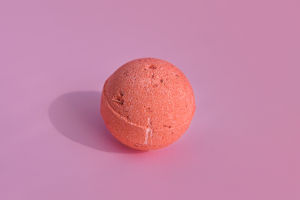Absorb Beauty
Every morning and evening, we invest considerable time and money in skincare products—face creams, serums, eye creams—all promising transformative effects on our skin.
But do these products truly penetrate and benefit our skin as advertised?
Understanding the Skin's Structure
Before delving into how skincare products are absorbed, it's essential to grasp the skin's basic structure. The skin is composed of three main layers: the epidermis, dermis, and subcutaneous tissue.
The epidermis, the outermost layer, acts as a protective shield and undergoes continuous renewal. Beneath it lies the dermis, housing blood vessels, nerves, hair follicles, and collagen. The deepest layer, the subcutaneous tissue, primarily comprises adipose tissue, contributing to heat insulation and cushioning.
Pathways of Absorption
Skincare products enter the skin through three main pathways: the transcellular pathway, the intercellular pathway, and via hair follicles and sebaceous glands. The transcellular pathway involves penetration through epidermal cells, while the intercellular pathway occurs through gaps between cells.
Products can also enter through pores via hair follicles and sebaceous glands. However, not all products effectively utilize these pathways due to factors such as ingredient composition, molecular size, and the skin's current condition.
Ingredients and Their Impact on Absorption
The efficacy of skincare absorption heavily relies on its ingredients. Certain components like hyaluronic acid, vitamin C, and vitamin E exhibit superior absorption capabilities. Hyaluronic acid, renowned for its moisture retention properties, deeply hydrates the skin.
Vitamins C and E act as potent antioxidants, safeguarding against free radical damage. Conversely, molecules like collagen and elastin, due to their larger size, struggle to breach the skin barrier, often forming protective films on the skin's surface rather than penetrating deeply.
Skin Condition's Influence
The skin's condition significantly influences product absorption. Healthy skin boasts a robust barrier that minimizes external substance penetration, potentially reducing the efficacy of skincare products.
In contrast, compromised skin barriers, characterized by dryness or damage, exhibit heightened permeability. This increased permeability allows skincare products to penetrate more effectively, delivering their intended benefits deeper into the skin.
Optimizing Absorption: Best Practices
Achieving optimal skincare absorption involves adopting appropriate application techniques. Thoroughly cleansing the skin before application eliminates surface impurities, allowing products to interact more effectively with the skin. Gentle massaging techniques enhance blood circulation, facilitating better product penetration into the epidermis.
Personalized Approach to Skincare
Individual variability in skincare product absorption underscores the importance of selecting products tailored to one's specific skin needs.
By choosing formulations suited to our skin type and condition, and adhering to recommended application methods, we maximize the absorption of beneficial nutrients. This personalized approach promotes healthier, more radiant skin.
In conclusion, while the absorption of skincare products varies among individuals, understanding the skin's structure, the influence of ingredients, and the impact of skin conditions can help optimize their effectiveness.
By adopting informed skincare practices, we can harness the potential of these products to nourish and maintain the health and beauty of our skin effectively.


